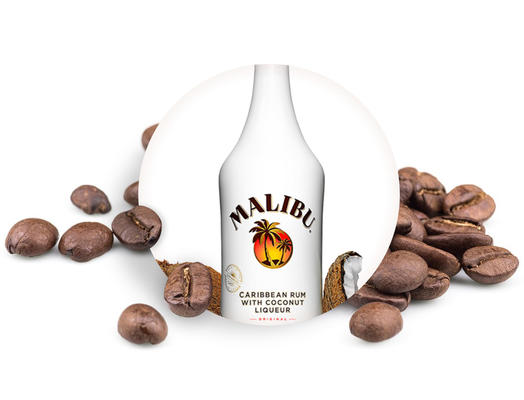cinibeans
MALIBU COFFEE BEANS
MALIBU COFFEE BEANS
Couldn't load pickup availability
Malibu bean coffee is actually very successful! The new flavour has found its fans very quickly. The coconut rum really takes you away from the hustle and bustle of everyday life to somewhere in the sunny Caribbean. There will be time to wallow on the beach, surf, build sandcastles and drink ice-cold drinks... That's what you want! Place of origin:
Peru
Species:
Typica
Countryside:
Puno Norte
Sea level f. m.:
1900m
Taste:
Malibu
Processing:
Wet
Composition
Arabica 100%,
Aroma
The taste and foam of coffee
100% Arabica coffee is pleasantly enveloped by the perfect blend of coconut and rum. Basically Puno coffee is round, full-bodied, low acidity and has a natural sweet taste. With proper grinding and preparation, your espresso will be adorned with a soft and dense foam.
Origin of the coffee
Our coffees are supplied from the Peruvian Andes and flavoured in our roastery. Our beautiful, full-bodied coffee comes from the Puno mountain region. The climate, altitude and rainfall of the mountain region provide ideal conditions for coffee cultivation. Local smallholders (98% of coffee farmers in Peru are smallholders) have been growing coffee for generations. Because their plantations are located on steep slopes, it is difficult to transport industrial fertilisers and sprays. Puno coffee is considered organically grown.
Coffee bushes are evergreen shrubs with cherry-like fruits, usually containing two seeds. The cherries ripen within 9 to 14 months, so they are harvested almost continuously. Processing involves peeling off the outer skin, fermentation and drying. The so-called washing technique is carried out using water in large tanks. The coffee fruits are pressed through special press plates to obtain the coffee beans, which are further fermented. The farmers dry the coffee in the sun or in driers.
Coffee flavouring is relatively new. Although it is true that it is known from history that spices, milk and sugar were added to the finished coffee. Coffee flavouring, as we know it today, takes place before or after the beans are roasted. The first option guarantees a high quality and long-lasting aroma. Even if this is a costly process, both financially and technically more complicated, our roasting masters use only this technique. Before pouring the beans into the roaster, he sprays the beans with a natural-based carrier oil.
Making flavoured coffee in an automatic coffee machine
If you want to use flavoured coffee in an automatic coffee maker with an automatic dispenser, we recommend that you make sure that this is possible in the manual of the coffee maker. If the machine manufacturer does not provide information on flavoured coffee, please follow the recommendations below.
The natural flavouring that the coffee is flavoured with may react with the plastics in the container and bleach if it comes into contact with them for a prolonged period of time.
Always load only as much flavoured coffee into the coffee machine as you will consume immediately.
After the flavoured coffee has been prepared, the next cup should be unflavoured coffee. This will clean the machine of any residues of natural flavouring agents.
The same rule should be followed when grinding flavoured coffee (manual and electric).
Instructions for use
Remember when you used to drink your mum's eggnog in the fridge? It was so sweet it made your mouth water. Now you can gorge yourself without a guilty conscience and almost calorie-free. Enjoy your favourite eggy cognac flavour as a luxury after a delicious lunch. Or start the day with a fragrant coffee. It's up to you to decide how you'll consume this divine drink.

